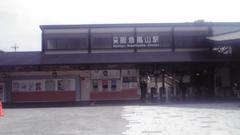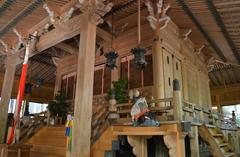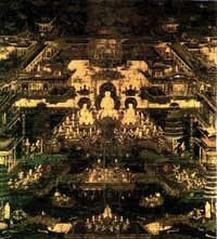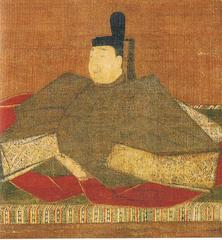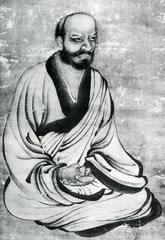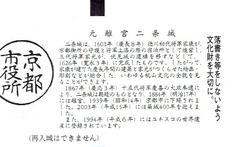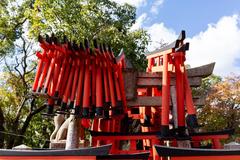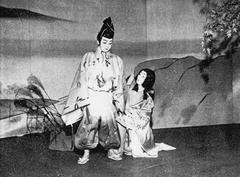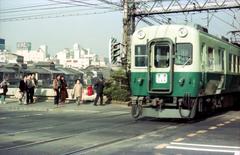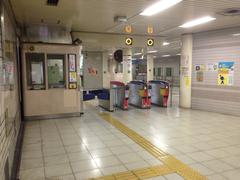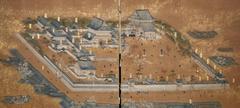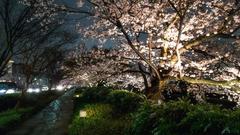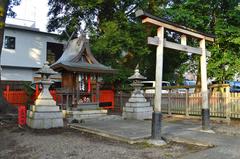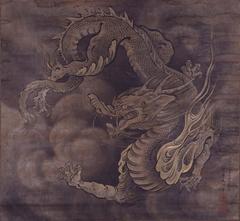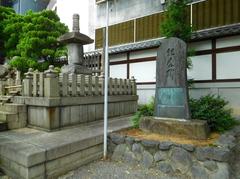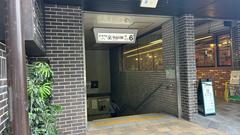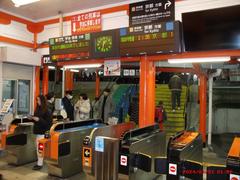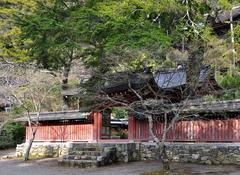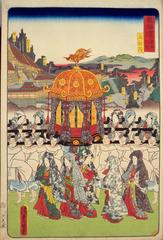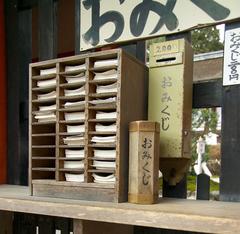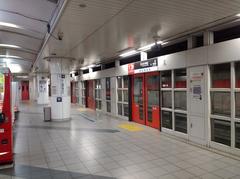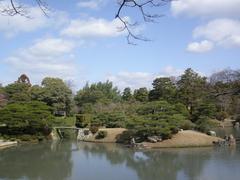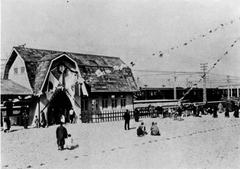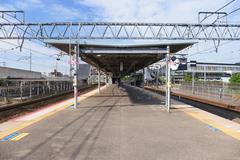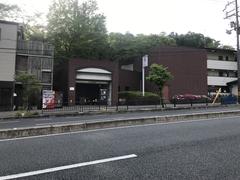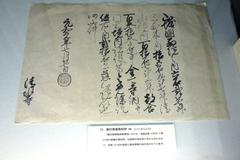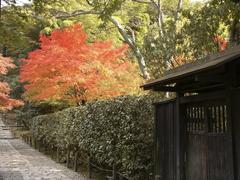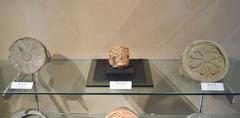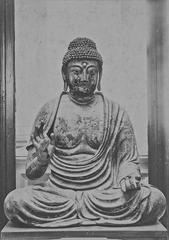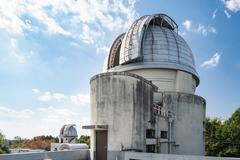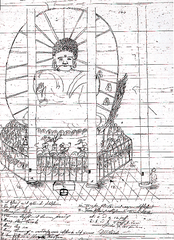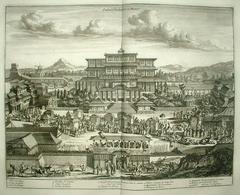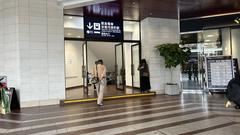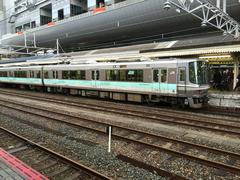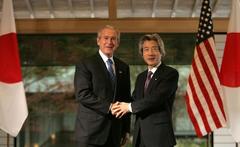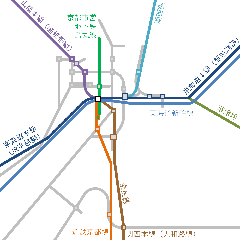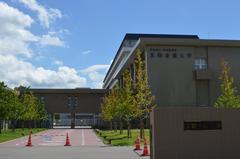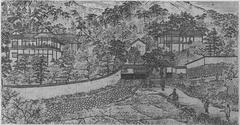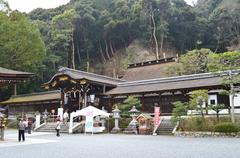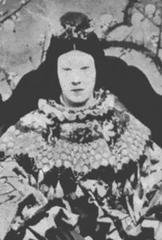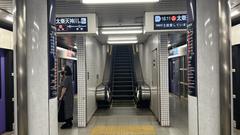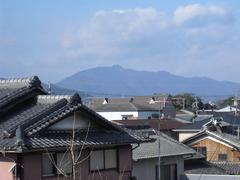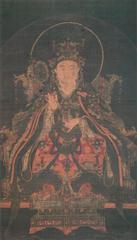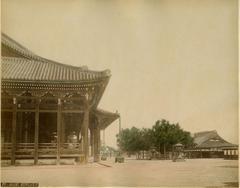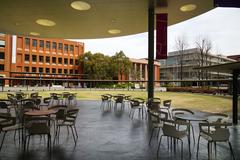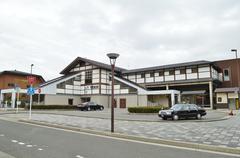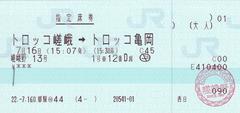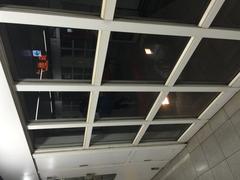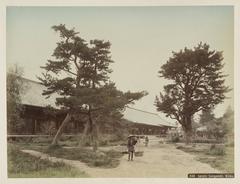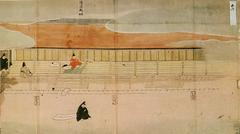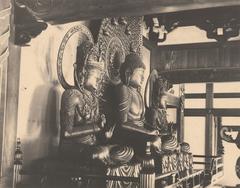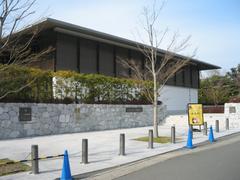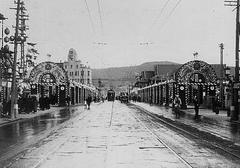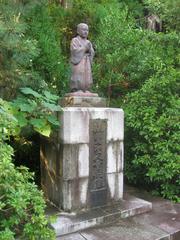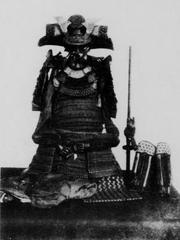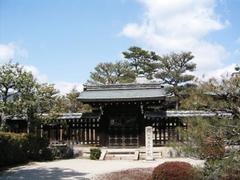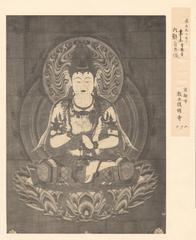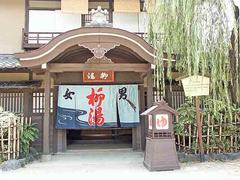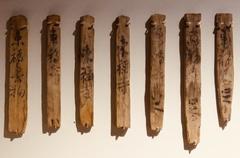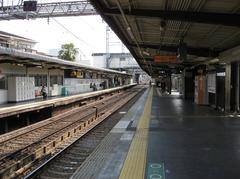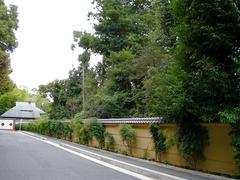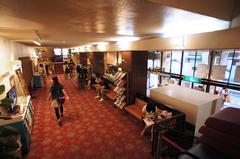Old Kyoto Central Telephone Office: Visiting Hours, Tickets, and Historical Significance in Kyoto
Date: 04/07/2025
Introduction: The Legacy of the Old Kyoto Central Telephone Office
The Old Kyoto Central Telephone Office—reborn as Shinpukan and now anchoring the Ace Hotel Kyoto—is a striking example of how Kyoto harmoniously weaves its centuries-old culture with contemporary urban life. Constructed in 1926 during the Taisho era, this historic building witnessed Japan’s transition from traditional imperial capital to a modern metropolis, all while retaining its singular cultural spirit (Tourist Guide; Japan Wonder Travel).
Showcasing Taisho-era architecture—marked by its iconic red brick façade, arched windows, and a fusion of Japanese and Western design—the building’s adaptive reuse has become a model for sustainable preservation in Kyoto. The 2001 transformation into Shinpukan, and the addition of a contemporary wing by architect Kengo Kuma, underlines Kyoto’s commitment to revitalizing its historic assets for the benefit of future generations (GCELab; Architect Magazine).
Today, Shinpukan is a vibrant destination—home to specialty shops, restaurants, event spaces, a cinema, and the Ace Hotel Kyoto. Its central location near Karasuma-Oike Subway Station, along with excellent accessibility features, makes it both welcoming and convenient for international visitors (Kanpai Japan; Japanese Wiki).
This guide provides comprehensive and up-to-date information on visiting hours, ticketing, events, accessibility, and the historical and cultural significance of the Old Kyoto Central Telephone Office. Whether you’re a history enthusiast, architecture buff, or first-time traveler, a visit to Shinpukan offers a nuanced perspective on Kyoto’s living legacy (Japan Travel).
Table of Contents
- Historical Overview
- Architectural and Cultural Significance
- Preservation Efforts and Adaptive Reuse
- Visitor Information: Hours, Tickets, and Accessibility
- Guided Tours and Events
- Ace Hotel Kyoto: Heritage and Hospitality
- Community Impact and Sustainability
- Frequently Asked Questions (FAQ)
- Travel Tips and Photo Spots
- Summary and Recommendations
- Sources
Historical Overview
Origins and Context
Completed in 1926, the Old Kyoto Central Telephone Office embodies the spirit of Japan’s Taisho era—a time of rapid modernization and social change. Its construction responded to the city’s growing demand for telecommunications, further cementing Kyoto’s relevance as both a historic seat of power and a forward-looking urban center (Tourist Guide).
Role in Modernization
The office played a critical role in connecting Kyoto’s businesses, government, and residents through Japan’s expanding telephone network. Its presence in the city’s core symbolized the seamless integration of new technologies into a traditionally rooted society (Japan Wonder Travel).
Architectural and Cultural Significance
Design Features
The building’s design showcases the Taisho-era’s architectural synthesis: Western-style red brickwork, arched windows, and decorative stonework, all while maintaining harmony with Kyoto’s urban fabric (Tourist Guide). Its robust construction and spacious interiors once housed complex telecommunications machinery, and today provide a striking backdrop for modern creative and commercial activities.
Symbolism
Beyond its physical attributes, the Old Kyoto Central Telephone Office epitomizes Kyoto’s philosophy of “living history”—where preservation and daily life are inseparably intertwined.
Preservation Efforts and Adaptive Reuse
From Utility to Cultural Landmark
With technological advances rendering the original telephone office obsolete by the late 20th century, the building faced possible demolition. However, robust advocacy from local authorities and preservationists led to its protection and creative reinvention (GCELab).
Transformation into Shinpukan
Reopened as Shinpukan in 2001, the building’s historical integrity was preserved while introducing new functions. The most significant recent update—a modern extension by Kengo Kuma completed in 2020—houses the Ace Hotel Kyoto and other amenities, blending the old with the new (Tourist Guide).
Community and Government Collaboration
Kyoto’s commitment to heritage is reinforced by strict zoning laws and incentives for restoration (Medium), with local residents playing an active role in shaping and sustaining these efforts.
Visitor Information: Hours, Tickets, and Accessibility
Shinpukan Complex
- Opening Hours: 10:00 AM – 8:00 PM daily (some venues may vary; check official listings)
- Admission: Free entry to public spaces; tickets required for select events or cinema screenings
- Location: Adjacent to Karasuma-Oike Subway Station, Nakagyo-ku (central Kyoto)
- Accessibility: Fully accessible with ramps, elevators, and accessible restrooms
Ace Hotel Kyoto
- Public Spaces: Open 10:00 AM – 10:00 PM; hotel guest areas open 24 hours
- Dining and Retail: No admission fee; reservations recommended for restaurants
- Architectural Tours: Available periodically; book in advance via hotel website (Architect Magazine)
Guided Tours and Events
- Guided Tours: Offered occasionally, focusing on architecture and history. Check the Shinpukan or Ace Hotel Kyoto websites for schedules.
- Special Events: Concerts, exhibitions, seasonal festivals, and hands-on workshops are held throughout the year. Some may require advance tickets or reservations.
Ace Hotel Kyoto: Heritage and Hospitality
Housed within the restored telephone office, the Ace Hotel Kyoto is a showcase of adaptive reuse. The renovation led by Kengo Kuma preserves original brickwork and integrates local materials—washi paper, tatami, ceramics—into the interiors (Architect Magazine). The central courtyard, inspired by Kyoto gardens, and the new wing’s eco-friendly features highlight Kyoto’s seamless blend of tradition and innovation.
Community Impact and Sustainability
- Economic Revitalization: The complex supports local businesses and artisans, creating jobs and attracting both residents and visitors (Kanpai Japan).
- Cultural Programming: Workshops, craft demonstrations, and artist collaborations engage the community and preserve intangible heritage (Japan Travel).
- Environmental Initiatives: Green roofs, inner gardens, and energy-efficient systems contribute to urban sustainability (NTT Facilities).
Frequently Asked Questions (FAQ)
What are the main opening hours?
- Shinpukan: 10:00 AM – 8:00 PM
- Shops: 11:00 AM – 8:00/9:00 PM
- Restaurants: 11:00 AM – 11:00 PM
- Ace Hotel Kyoto public areas: 10:00 AM – 10:00 PM
Is there an entrance fee?
- No fee for public areas; event/cinema tickets may be required.
Are guided tours available?
- Occasionally; check official sites for details.
How do I get there?
- Directly above Karasuma-Oike Subway Station; central and easy to access.
Is it wheelchair accessible?
- Yes; elevators and accessible restrooms throughout.
Can I take photos?
- Yes, in public areas unless otherwise posted.
Travel Tips and Photo Spots
- Best Time to Visit: Weekday mornings or early December for fewer crowds; late afternoon for optimal lighting.
- Photo Opportunities: Red brick façade, courtyard gardens, and interiors that blend historic detail with contemporary design.
- Local Experiences: Try a Velotaxi ride, join a craft workshop, or enjoy local produce at TAWAWA restaurant.
Summary and Recommendations
The Old Kyoto Central Telephone Office, now Shinpukan and home to the Ace Hotel Kyoto, stands as a testament to Kyoto’s artful union of preservation and progress. Its storied architecture, thoughtfully curated shops and eateries, and dynamic cultural programming offer visitors a window into Kyoto’s living history and modern creativity (GLTJP Directory; NTT Facilities).
We recommend checking current hours and events before your visit, using public transit for convenient access, and exploring the site’s full range of offerings—from history tours to culinary delights. Download the Audiala app for guided tours and real-time updates, and follow official channels for the latest news. Shinpukan is more than a historical site—it’s a vibrant space where Kyoto’s tradition and innovation meet.
Official Sources and Further Reading
- Tourist Guide: Old Kyoto Central Telephone Office
- Architect Magazine: Ace Hotel Kyoto Project Gallery
- Kanpai Japan: Shinpukan
- GCELab: Heritage Conservation in Kyoto
- Japan Travel: Sustainable Tourism Kyoto
- Japanese Wiki: Shin-Puh-Kan
- City Unscripted: Visiting Kyoto
- NTT Facilities: Shinpukan Project
- GLTJP Directory: Old Kyoto Central Telephone Office

